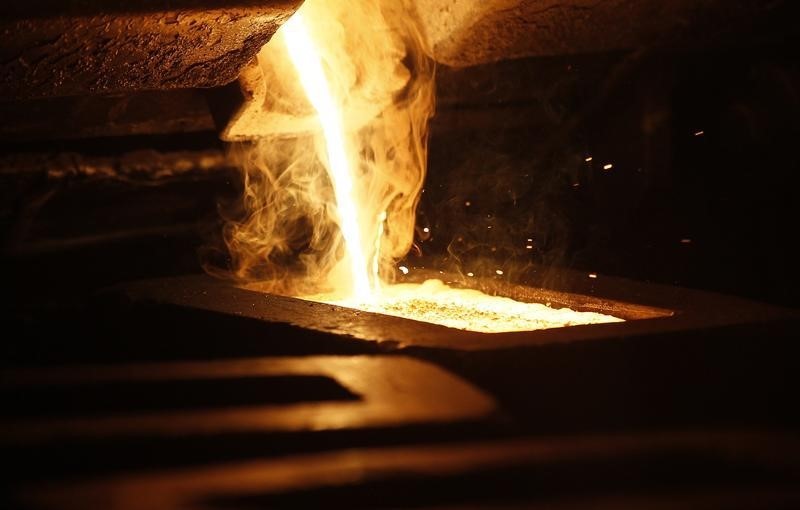Investing.com - Gold prices dipped in Asia on Wednesday with the near-term focus on the dollar as the Trump administration's struggles to find its economic and foreign policy footings.
Gold futures for August delivery on the Comex division of the New York Mercantile Exchange fell 0.51% to $1,266.10 troy ounce.
According to investing.com's Fed rate monitor tool, just 30% of traders expect the Federal Reserve to hike rates in December.
Gold futures have made a positive start to the week, adding to its three-week winning streak amid a slump in the dollar and continued political uncertainty in Washington.
U.S. political uncertainty remained front and center, after President Donald Trump ousted recently hired White House communications chief Anthony Scaramucci on Monday.
A weaker dollar makes commodities such as gold that are priced in the greenback cheaper to buyers outside of the United States.
Overnight, gold prices bounced off lows on Tuesday, shrugging off an uptick in the greenback after a raft of economic data pointed to moderate economic growth and inflation, adding to expectations the Federal Reserve may abandon its plan to raise rates again this year.
Gold prices hit seven-week highs, after a trio of mixed economic reports on inflation; personal spending and manufacturing activity, failed to ease concerns about the strength of the U.S. economy.
The personal consumption expenditures (PCE) price index, rose 0.1% in June. In the 12 months through June, the so-called core PCE price index increased 1.5% after advancing by the same margin in May.
Fresh on the heels of the inflation data, was a report indicating a slowdown in consumer spending as personal income failed to increase for the first time in seven months, pointing to a moderate pace of consumption growth in the third quarter.
Meanwhile, the Institute for Supply Management’s manufacturing gauge slowed to 56.3 in July, from a reading of 57.8 the previous month. That compared with economists’ expectations for the manufacturing index to fall to 56.4.
Readings above 50 are meant to signal that output in the industry is rising.
The mixed economic reports failed to ease investor doubts over whether the Federal Reserve will keep to its plan to raise rates at least once more this year.
“I think the psychology developing over the past several months is that the Fed is expected to be more hawkish and aggressive, but I don’t believe that’s going to come to fruition,” said Peter Hug, global trading director at Kitco Metals, in an interview.
